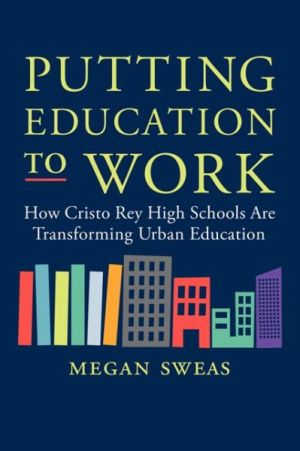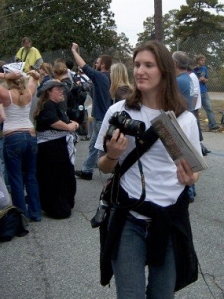 Written by Megan Sweas
Written by Megan Sweas
Published by HarperOne, August 2014
Breakthroughs in a Broken System
A senior at Cristo Rey Jesuit College Preparatory School in Houston, Texas, Matias Esparza is lanky, with thick black hair and thin-rimmed glasses. On first impression, he seems unassuming and nerdy, speaking quietly while his classmates joke and laugh around him. But he is also a leader—the type of student who not only earns good grades, but also tutors his classmates. When he gets up on the stage to deliver his valedictorian speech at the school’s inaugural graduation, he is greeted by the enthusiastic applause of his classmates and more than a thousand guests. …
On a stage typically reserved for rock stars, Matias stands tall in the bright lights and greets the dignitaries on the stage. He looks comfortable in his black gown, yellow cape, and black mortarboard, casually brushing back the tassels that keep falling in his eyes.
He starts his speech with a quote. “When she was just a girl, she expected the world. But it flew away from her reach. So she ran away in her sleep and dreamed of para-para-paradise,” he says, slowing the final word. Then, in a low baritone, he begins to sing—a capella: “Para-para-paradise, every time she closed her eyes.”
The crowd laughs and shouts while Matias smiles on stage. As the applause ends, Matias takes a serious tone. He can relate to the girl in his favorite song, “Paradise,” by the band Coldplay, which has played on the same stage. As a boy, he thought his mom could provide all the toys he and his younger brother wanted. “Then,” he says, “the concept of money and the reality that we did not have any sank into my childish brain. I knew that no matter how hard I worked, paradise would be just out of my reach.”
Continue reading an excerpt from the book
_________________________
From the Author
In Putting Education to Work, I tell the story of how the Cristo Rey Network has developed an effective model of education that helps disadvantaged students reach their goals.
Like Matias, all Cristo Rey students come from low-income communities. They are typically two years behind grade level when they arrive as freshman, and yet 100 percent of Cristo Rey graduates are accepted into 2- or 4-year colleges and 90 percent enroll.
While Catholic schools are closing in many inner-city neighborhoods, the Cristo Rey Network has opened 28 schools since 1996 and plans to expand to 40 schools by 2020. Its innovative work-study program makes the schools sustainable. Students work five days a month in corporations to fund their education.
But what started as a financial model has become an essential part of the students’ education as well. The internships build their skills and confidence and expose them to a new world of possibilities.
In Part One, I outline the challenges of urban education and situate the Cristo Rey model in the history of Catholic education. I also look at the administration of the schools and the role of the national Network. In Part Two, I delve into the three central elements of the model — academics, the work-study program, and faith and character formation.
These three elements will always shape the Cristo Rey model of education, but the schools are not static. The educators continuously strive to improve their programs, holding themselves and their students to high expectations. This is the essential lesson of the Cristo Rey story, making the schools a model for Catholic and secular educators alike.
After four years at Cristo Rey Jesuit in Houston, Matias earned a full-ride scholarship to Rice University. When students aim high, they can reach their paradise.
ORDER YOUR COPY TODAY!
Read the Press Release from HarperOne
About the Author
Megan Sweas is a freelance journalist based in Los Angeles and author of “Putting Education to Work: How Cristo Rey High Schools are Transforming Urban Education.” She writes about social and economic justice issues and world religions.
Sweas previously served as an editor at U.S. Catholic magazine. She was an Annenberg Fellow at the University of Southern California, where she earned a master’s degree in Specialized Journalism. She graduated from the Medill School of Journalism at Northwestern University.








3 Pingback